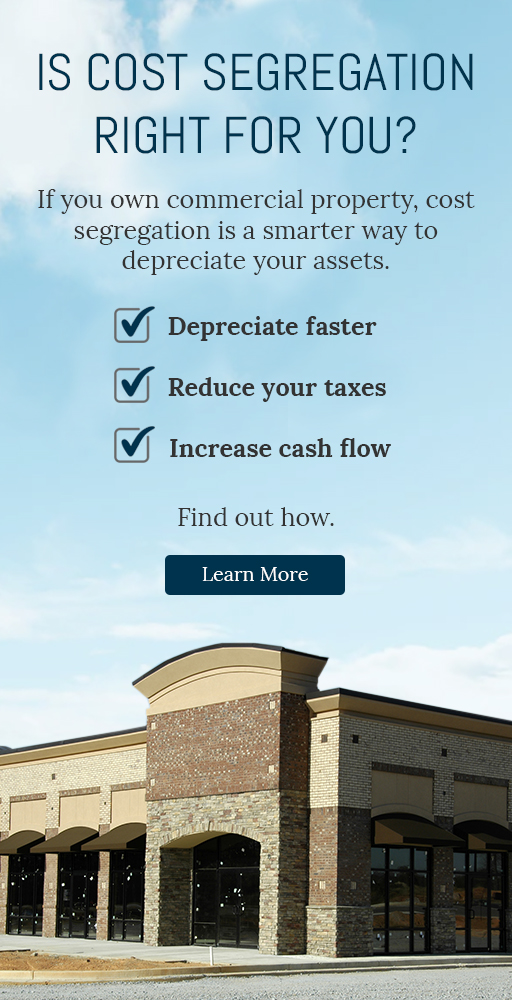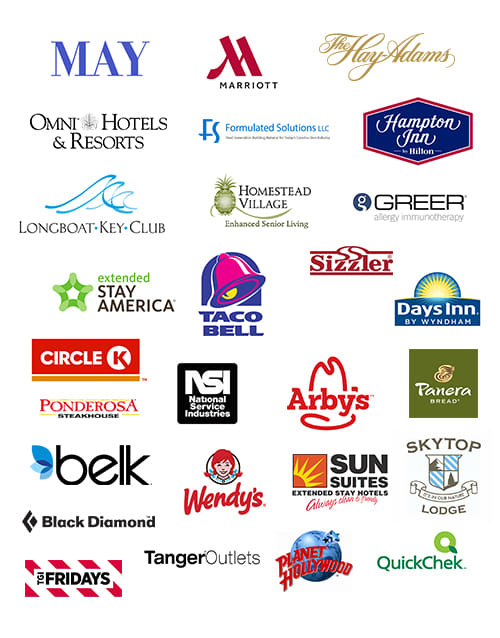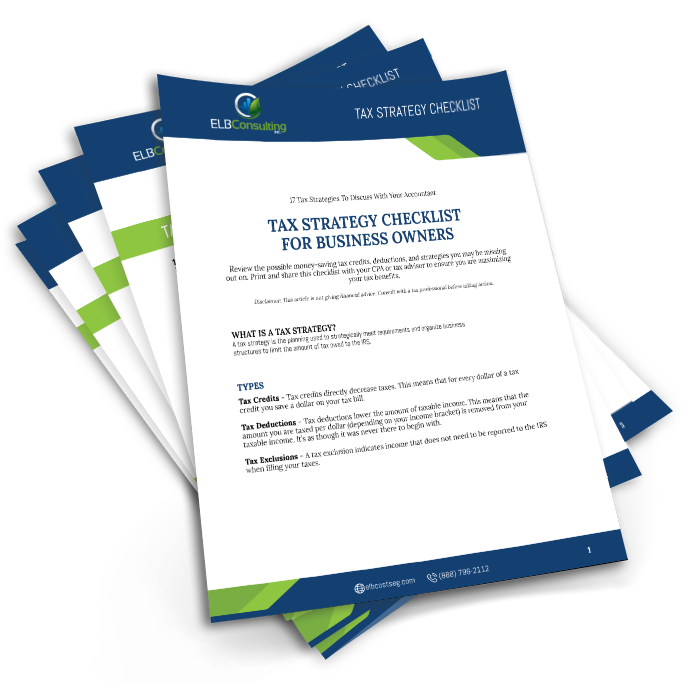Confused about what to expense versus what to capitalize?
The Tax Cuts Jobs Act (TCJA) has done a lot to benefit commercial real estate owners and investors. Most notably in the changes to the depreciation schedule to allow for 100% Bonus Depreciation on new construction, new improvements, and for property acquisitions (or used property) as the IRS has defined it. Including ‘used property’ in the bonus depreciation is also part of the TCJA.
What is 100% Bonus Depreciation?
In short, it allows you to take 100% of the depreciation in the first year of ownership for property with a tax life of 20 years or less. The standard depreciation term for commercial property is 39 years, and for residential property is 27.5 years. To maximize the components under 20 years, one must conduct a cost segregation study, which identifies the allowable shorter components in 15, 7, and 5-year categories.
This gets us into component level depreciation and then the decision as to what will qualify as capital expenditures, or what qualifies as a maintenance and repair expense. Tax laws constantly change and many CPAs, who do not focus in this area, may still be operating under different assumptions.
[FYI, what’s in this article is accurate as of today, but could be changed anytime by congressional Ways and Means committee putting changes up for a vote]
When looking at component depreciation to capitalize versus expense, there are a few key IRS Rulings:

- Rev. Ruling – §1.263(a)-3(d)(3)(i): Which clearly addresses components that are functionally interdependent. You cannot expense an individual breaker or the trap on the breakroom sink simply because they cost $20 and well within the De Minimis* expense criteria, as the systems are dependent on those assets to remain functional and must be capitalized.
- Rev. Ruling – “§ 1.263(a)-3(d)(3)(i): Functionally Interdependent – Components of property are functionally interdependent if the placing in service of one component by the taxpayer is dependent on the placing in service of the other component by the taxpayer.”
- Rev. Ruling – §1.263(a)-1(f), if an asset is not “functionally interdependent”, the general rule for expensing (for most of our clients) is $2,500 or less with a useful life of less than a year. That answers our expensing question.
*“De minimis – A safe harbor annual election that hinges on the taxpayers accounting policy and permits taxpayers to treat items for tax as it would for books provided; 1) The cost does not exceed $5000 for taxpayers with applicable financial statements (AFS) or $2500 ($500 for amounts incurred prior to January 1, 2016) for taxpayers without AFS per invoice or per item, or 2) The economic useful life of the property does not exceed 12 months.”
The items below (and case law) clearly addresses the guidelines that require assets to be capitalized. This is from a tax perspective but is also addressed in GAAP guidelines that tax accountants/CPAs should be familiar with or certainly have access to this information.
The Internal Revenue Code, Treasury Regulations and case law set forth a series of guidelines that help to distinguish expenses from capital expenditures, although distinguishing between these two types of costs can be extremely difficult.
In general, four types of costs related to tangible property must be capitalized:
- Costs that produce a benefit that will last substantially beyond the end of the taxable year.
- New assets that have a useful life substantially beyond one year. For example, in Commissioner v. Idaho Power Co., the taxpayer used its own equipment to construct and improve various facilities that it owned. The taxpayer, in this case, wanted to have the depreciation of the construction equipment treated as a deduction. The Court held that because the equipment was used to invest in a capital asset, the new and improved facilities, the costs had to be treated as capital expenditures.
- Improvements that prolong the life of the property, restore property to a “like-new” condition or add value to the property. For example, in Fedex Corp. v. United States,[10] the taxpayer performed repairs upon jet engines by removing them from the airplane and then having parts replaced. The taxpayer argued that these expenses were deductible, but the IRS stated that the costs should be capitalized. The court held that the inspection and replacement costs could be deducted because the improvements did not add to the value and did not prolong the life of the airplanes as a whole. And, in Midland Empire Packing Co. v. Commissioner, the taxpayer added a concrete lining to its basement floor to prevent oil from seeping into where the taxpayer stored meat. The taxpayer argued that the costs of installation were deductible, and the tax court agreed. The costs of installation only permitted the taxpayer to continue the plant’s operation. The expenses did not add to the value of the business or permit the taxpayer to make new uses of the basement.
- Adaptations that permit the property to be used for a new or different purpose. In contrast to Midland Empire Packing Co., in Mt. Morris Drive-In Theatre Co. v. Commissioner, under threat of litigation, the taxpayer was forced to create a new drainage system to prevent run-off rainwater from flooding his neighbor’s farm. The taxpayer argued that these costs were deductible, but the tax court disagreed. Because the taxpayer knew in advance the property had an inadequate drainage system, the costs to accomplish this adaptation of the property were deemed a capital expenditure. The costs were not simply an improvement of the preexisting drainage system, but rather a completely new addition to the property that permitted the taxpayer to use the property as a drive-in theater.
While there may be some misunderstanding or misconception of the guidelines, or the desire to take components as an expense line to benefit immediately, the IRS has clear guidelines as to what qualifies as an expense and what should be capitalized.
When engaging with a professional cost segregation firm, be sure they have a proven track record of success, engineering expertise and the accounting experience and resources to keep current with the Federal tax guidelines.
You may be missing out on tax benefits.
Own commercial property?
We can help you find smarter ways to depreciate your property and reduce your taxes. Tell us about yourself and we’ll see how much you could be saving.




